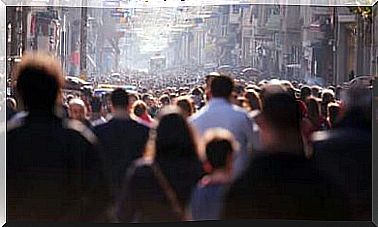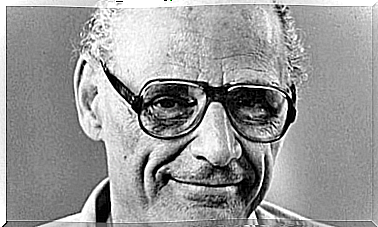Psychasthenia: Fatigue Of The Soul Or Irrational Suffering

Psychasthenia is one of the oldest terms in the world of psychology. He appeared in early 1903 to define the suffering of the human soul, the pain of those who feel lost and have no confidence in themselves.
This existential anxiety leads the person to permanent confusion, obsessive thoughts, phobias and this state of persistent and almost always irrational anxiety. Today this concept is no longer understood in the same way.
It is, however, seen as a personality trait, also forming part of classifications such as MMPI. It is the psychiatrist Pierre Jane who introduced this dimension at the beginning of the 20th century, thanks to his work Obsessions et Psychasthénie, which had a great significance.
We could define the psychasthenic person as someone unable to silence the noise in their mind, the noise of preoccupation that gnaws at the mood and those problems that they cannot solve. This constant rumination subjects her to great exhaustion and profound helplessness.
Personalities like Carl Jung or Karl Jaspers have taken an interest in this characteristic of the personality. Currently, we associate psychasthenia with obsessive-compulsive disorder.

What is psychasthenia?
Psychasthenia now includes subscale 7 of the MMPI personality questionnaire. The latter describes a problematic way of being and acting, very prone to obsessive-compulsive disorder. This trait refers to constant doubts, paralyzing fears and a very particular physical state characterized by great exhaustion.
So, although this term was used in the past as a diagnostic category, today it is only a personality trait. In other words, psychasthenia does not appear as such in the Diagnostic and Statistical Manual of Mental Disorders (DSM-V).
Its importance in psychology, and the inherent appeal of the term itself, prompts us to learn more about it. Let’s dig deeper.
Psychasthenia was a type of neurosis
Psychiatrist Pierre Jane has divided neuroses into two types: hysterical and psychastenic. The former essentially defined emotional disturbances accompanied by seizures or paralysis.
The seconds were a bit more complex. They raised a problem when it came to accepting reality and change. Individuals were then blocked in the face of vital suffering, unable to go further, being trapped in denial, in obsession, in this despair of someone who refuses to accept what surrounds him.
The psychasthenic was therefore a very irritable neurotic. He remained immersed in his own suffering because he did not know how to accept the future. And this denial gradually led him to develop an increasingly pathological state of mind.
What characteristics define this dimension?
Psychasthenia presents a broad symptomatology. Right now, this personality trait is useful to us because, as we pointed out, it tends to define the patient with obsessive-compulsive disorder (OCD). However, let’s see the dimensions that made it up before:
- Great anxiety, obsessive thoughts and constant rumination.
- Feeling of lack of control.
- Fears and lack of confidence.
- Negative thoughts and marked hopelessness.
- Difficulty making decisions.
- Irrational fears and phobias.
- Bad management of emotions.
- Tendency to self-criticism.
- Feeling of strangeness in front of the world. Those affected do not understand it or feel included, which leads to intellectual and social inhibition.
- Refusal of change. They show great mental inflexibility.
- Physical exhaustion from ruminations.
- Insomnia.
- Nervous tics and psychosomatic illnesses.

Why is it called fatigue of the soul?
At the beginning of the 20th century, psychasthenia was called the disease of fatigue of the soul. Following this poetic description, some wanted to highlight something very concrete.
Human beings are often trapped in an existential corner without knowing where to turn. The world therefore seems strange, devoid of interest and meaning to those who care. It is then that we withdraw into ourselves, that we move away from everything and everyone.
The one who flees reinforces fear. And that’s when insecurity, irrational thinking, obsession and even panic feed back.
This fear without a precise origin very often stems from the vital confusion of people who cannot find their place in the world. Their souls find nothing to cling to. And in the midst of this cycle of loneliness and fear emerges fatigue, extreme exhaustion.
This type of definition no longer applies at present. The term psychasthenia, however, is still used to understand the manifestation of obsessive-compulsive disorder. In these cases, studies such as those carried out at the psychiatric service of Hôtel-Dieu (Paris) indicate that treatments with antidepressants, such as tianeptine, are very effective.
Times are changing, but clinical realities prevail in order to better take charge of our health and guarantee the quality of life of individuals. Fortunately…










